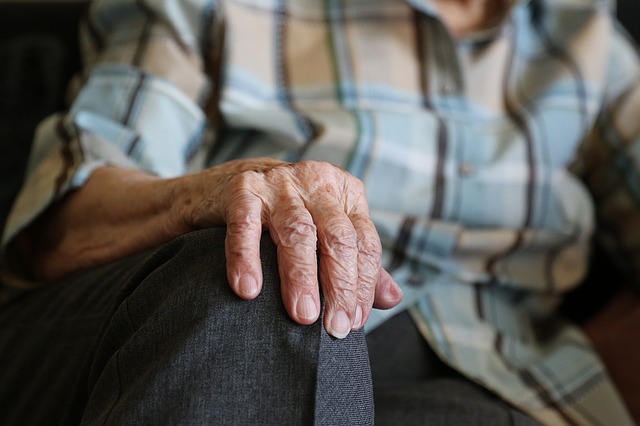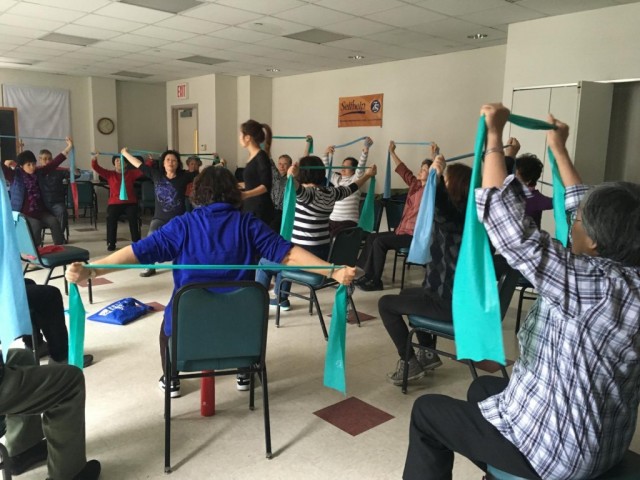February 2006 - Most people have heard stories about an older person who "dies of a broken heart" shortly after their partner's death. A new study finds that hospitalization of a spouse for a serious illness also increases their partner's risk of death. Further, the risk is greater with certain diagnoses, such as dementia, stroke and hip fracture. The study was sponsored by the �National Institute on Aging (NIA), part of the National Institutes of Health (NIH).
The report, by Nicholas A. Christakis, M.D., Ph.D., M.P.H., of Harvard Medical School, and Paul D. Allison, Ph.D., of the University of Pennsylvania, is the first to measure a link between a spouse's hospitalization and increased mortality of their partner across a comprehensive range of spousal diseases. The findings, says Christakis, were striking. "When a spouse is hospitalized, the partner's risk of death increases significantly and remains elevated for up to two years," he notes. The study is published in the Feb. 16, 2006, issue of the New England Journal of Medicine.
"This highly innovative study, in an enormous sample of older people, demonstrates yet another important connection between social networks and health," says Richard M.Suzman, Ph.D., Associate Director of the NIA for Behavioral and Social Research. "We don't yet know the full extent to which social networks affect health. We need to explore the mechanisms behind the stresses associated with these hospitalizations as we look for ways to protect people when their central relationships are disrupted."
Christakis and colleagues studied more than half a million couples over 65 years old who were enrolled in Medicare from 1993 through 2001. Over that period, the study found that, overall, having a sick spouse is about one fourth as bad for a partner's health as having a spouse actually die. Some spousal diseases, such as hip fracture or psychiatric conditions, were nearly as bad for partners as it would be if the spouse actually died. The period of greatest risk is over the short run, within 30 days of a spouse's hospitalization or death, the researchers noted, when the risk of death upon a spouse's hospitalization is almost as great as that when a spouse dies. The mortality risk increased with age and, for women of a hospitalized husband, with poverty.
The illness responsible for the spouse's hospitalization also matters. For example, among men with hospitalized wives, if their wife is hospitalized with colon cancer, there is almost no effect on the husband's subsequent mortality. But if the wife is hospitalized with heart disease, the risk of death for a husband is 12 percent higher compared to the wife not being sick at all. If one's wife is hospitalized with psychiatric disease, a partner's risk of death is 19 percent higher. And if one's wife is hospitalized with the principal diagnosis of dementia, mortality risk for the husband is 22 percent higher. Similar effects are seen in women whose husbands are hospitalized.
Continue Reading Below ↓↓↓
The more a disease that causes a hospitalization interferes with the patient's physical or mental ability, regardless of the extent to which it is deadly, the more of an impact it may have for the partner of the ill person, the researchers suggest. "The study suggests that diseases that are more disabling are more likely to result in disease and death in the caregiving spouse," Christakis says. Spousal illness might also deprive the partner of emotional, economic or other practical support, or might impose stress on the caregiver which may contribute to their risk of death, the investigators theorize.
Christakis and his colleagues are interested in the health consequences of social networks. The impact of the death of one spouse on the mortality of the other is one well-known example. The impact of illness is a further example. "People's health is interconnected," Christakis says. "When we take care of people when they're sick, we're also taking care of the patients' spouses. So helping one person might help others. Such benefits should be included in any cost-benefit analyses of interventions.
Source: NIH/National Institute on Aging









